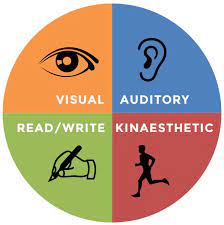Understanding Learning Styles in Medical Microbiology
Understanding Learning Styles in Medical Microbiology
Introduction

Medical microbiology is a fascinating field that delves into the world of microorganisms—bacteria, viruses, fungi, and more—that play a crucial role in human health and disease. As you embark on your journey through this subject, understanding your learning style can significantly enhance your comprehension and retention of essential concepts.
What Are Learning Styles?
Learning styles refer to the different ways individuals process and retain information. While everyone has a unique blend of learning preferences, three primary styles are commonly recognized:
- Visual Learners: These learners absorb information best through visual aids, such as diagrams, charts, and illustrations. Visual representations help them grasp complex topics and create mental connections.
- Auditory Learners: Auditory learners thrive when they hear information. Lectures, discussions, and audio recordings resonate with them. They benefit from explaining concepts aloud or participating in group discussions.
- Kinesthetic Learners: Kinesthetic learners learn by doing. They prefer hands-on experiences, practical demonstrations, and interactive activities. Movement and physical engagement enhance their understanding.
Applying Learning Styles to Medical Microbiology
1. Visual Learners
- Microbial Diversity: Visualize the diverse world of microorganisms. Create colorful flowcharts or mind maps that categorize bacteria, viruses, and fungi based on key characteristics.
- Cell Structures: Draw detailed diagrams of bacterial cell walls, viral capsids, and fungal structures. Label each component to reinforce your understanding.
- Pathogenesis Pathways: Illustrate how pathogens invade host cells, replicate, and cause diseases. Visualize the steps involved in infection.
2. Auditory Learners
- Lectures and Podcasts: Attend lectures or listen to microbiology podcasts. Pay attention to the professor’s explanations and engage in discussions with peers.
- Record Your Notes: Record your own voice explaining microbiology concepts. Play it back to reinforce your memory.
- Flashcards with Audio: Create flashcards with questions on one side and answers on the other. Read the questions aloud and test yourself.
3. Kinesthetic Learners
- Laboratory Sessions: Make the most of practical sessions. Cultivate bacterial cultures, perform Gram staining, and observe microbial growth.
- Interactive Models: Use 3D models or virtual simulations to explore microbial structures. Manipulate them to understand how enzymes function or how viruses attach to host cells.
- Role-Playing: Act out scenarios where you’re a pathogen invading a host. Understand the molecular interactions involved.
Conclusion
Remember that most learners exhibit a mix of these styles, so adapt your study techniques accordingly. Combine visual aids, discussions, and hands-on experiences to reinforce your medical microbiology knowledge. Happy learning!
References:
- University of Southampton – BIOL2044 Medical Microbiology
- Class Central – Best Microbiology Courses for 2024
- Med School Advice – How to Study for Medical School Microbiology
Disclaimer: This blog post provides general advice and educational insights. Always consult your course materials and professors for specific guidance tailored to your learning needs.













Post Comment